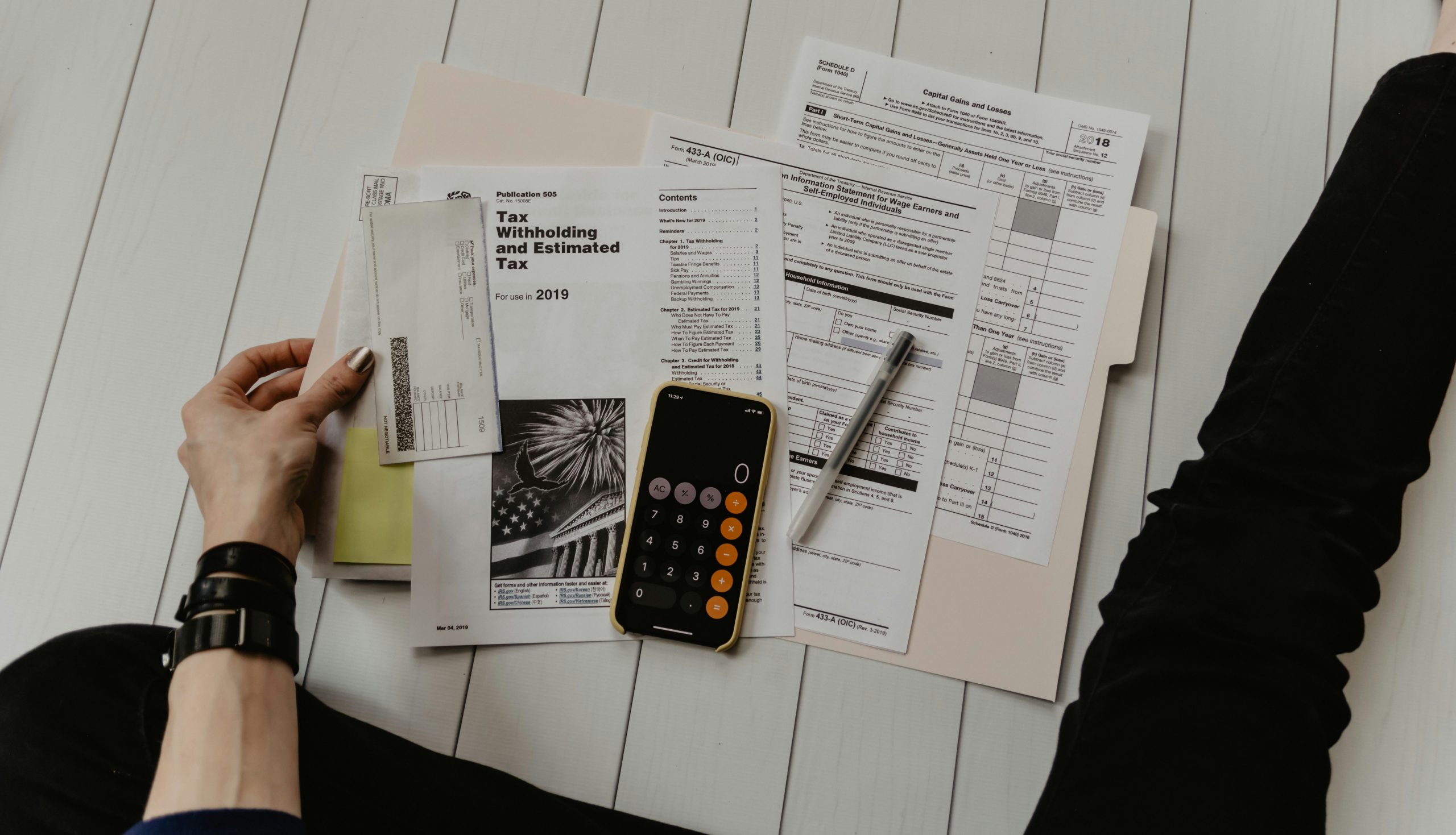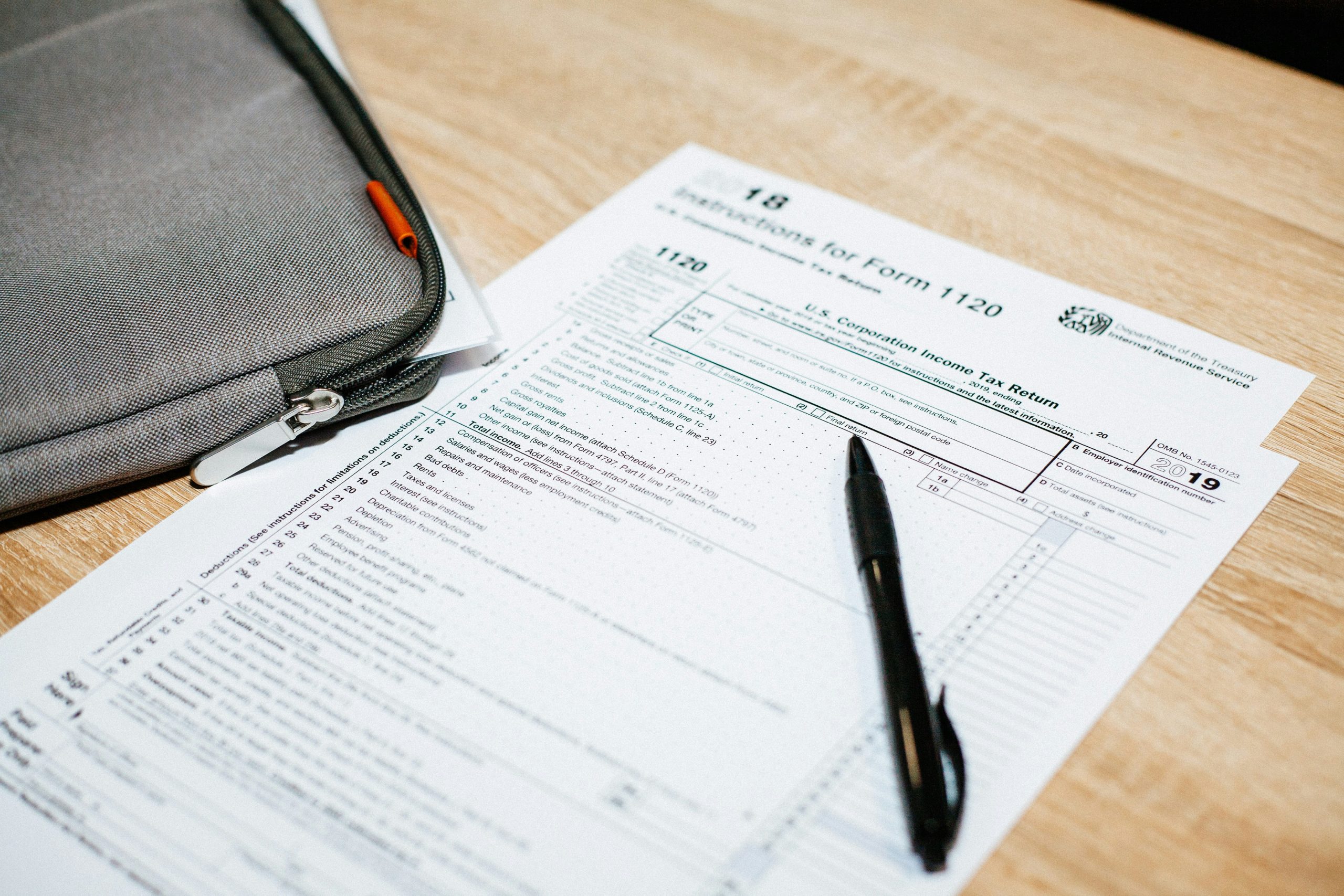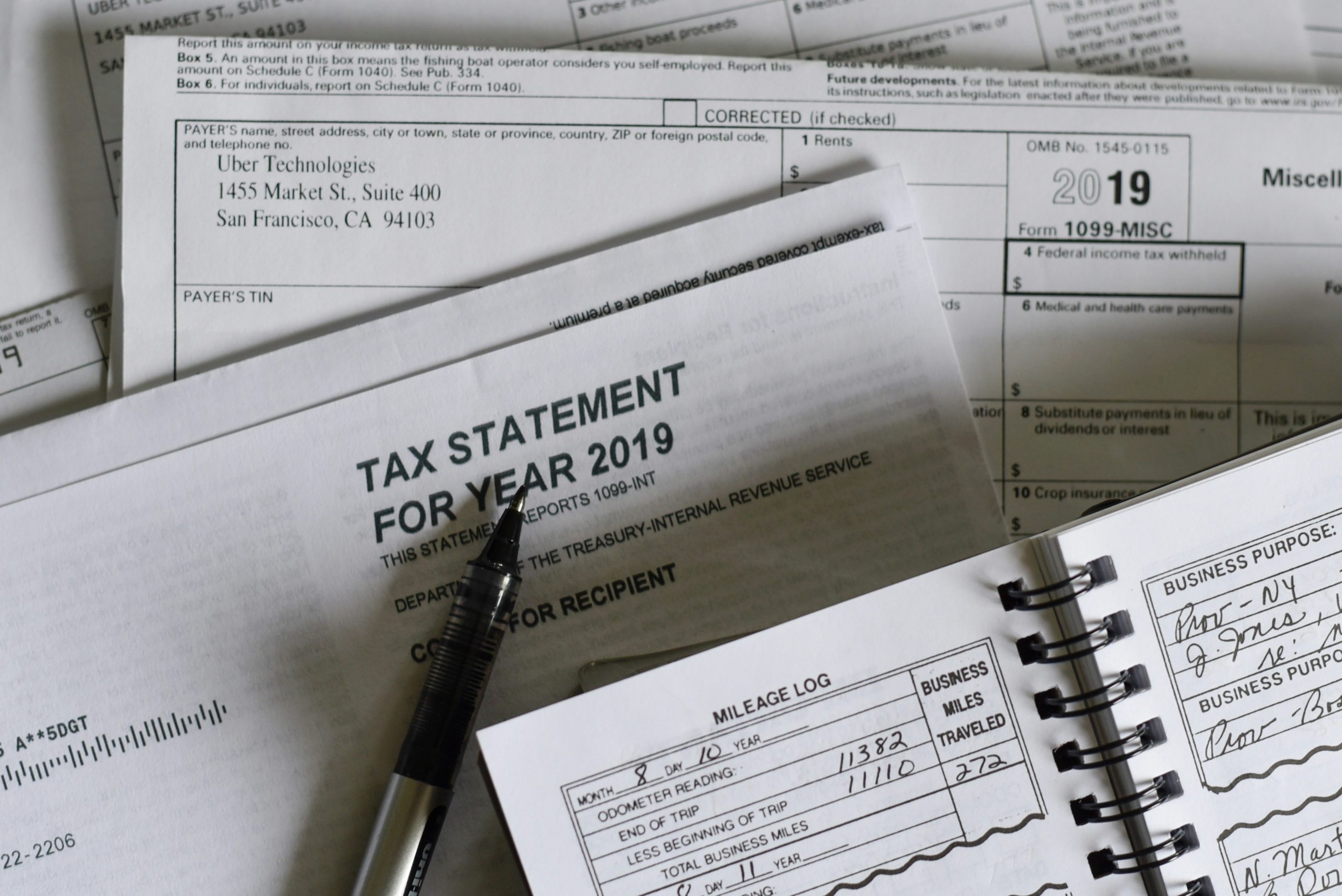The Ultimate YA 2023 Tax Guide For Young Adults
 Thirsty for JUICE content? Quench your cravings on our Instagram, TikTok and WhatsApp
Thirsty for JUICE content? Quench your cravings on our Instagram, TikTok and WhatsApp

As March rolls around, Malaysia’s tax season for 2024 kicks off with a bang, marking the beginning of e-Filing submissions for the 2023 year of assessment (YA 2023) by the Inland Revenue Board (IRB) or Lembaga Hasil Dalam Negeri Malaysia (LHDN).
For those whose yearly earnings soared past RM34,000 in 2023, taxes become an unavoidable part of the deal. But fear not! Amidst this financial responsibility, there are paths to relief through tax deductions, reliefs, and rebates.
The deadline for submitting Form BE, the individual income tax return form, looms large on 30 April 2024, with a grace period stretching until 15 May 2024.
Check out our step-by-step guide, serving up a sleek roadmap for tackling tax filings in 2024. We’ve got all the deets on eligibility criteria, turbocharging deductions, and staying on the right side of the law in Malaysia’s tax scene.
Note: We’ll start with a how-to for first-time tax filers. If you’re here for a list of tax reliefs/ deductions, exemptions, refunds, or other FAQ for YA 2023, simply skip past our 5 steps.

Step 1 – Get Your Tax ID (for First-Timers!):
So, you’re diving into the tax world for the first time? No sweat! Here’s the lowdown on snagging your tax ID:
Online or In-Person: You’ve got options! Swing by any LHDN office and they’ll walk you through the process in person, or simply hit up the e-Daftar website (permohonan TIN). We’ll focus on the online route because who doesn’t love a bit of digital convenience, right?
- Fill in the Form: Go to e-Daftar and locate the Online Registration Form. Input your personal details, just like creating a profile. You can save your progress if needed. Once completed, submit the form and remember to jot down your application number.
- Upload MyKad Copy: When prompted, upload a digital copy of your MyKad as a supporting document.
- Submit the Form: Ensure all required fields are filled out and the necessary documents are uploaded. Then, submit the form.
- Immediate Approval or Acknowledgment: Upon submission, your application might be instantly approved, granting you your income tax number immediately. Alternatively, you may receive an acknowledgment receipt with an application number.
- Wait for Email: If you receive an acknowledgment, await an email within three working days containing your income tax number.
- Check Application Status: Keep track of your application status through e-Daftar or by contacting LHDN directly.
Follow these steps, and you’ll soon have your very own tax ID!

Step 2 – Ready To Dive Into e-Filing?
To register for the e-Filing platform and obtain your digital certificate, follow these steps:
- Access MyTax: Navigate to the MyTax website and input your IC number. You’ll receive a message stating that your “Digital Certificate does not exist.”
- Apply for Digital Certificate: Click on the option to apply for a digital certificate via the e-CP55D online form. This method is commonly used by taxpayers.
- Verify Personal Details: Confirm your registered email address and personal details (IC number, full name, and email). Make any necessary amendments and submit the form.
- Activation Link: Check your email for the activation link. Click on the link to activate your digital certificate. Note that the link is valid for two days, so it’s best to activate it promptly.
- By following these steps, you’ll successfully apply for your digital certificate, which is essential for accessing the e-Filing portal and other tax-related services provided by LHDN.
For returning tax filers, if you find that your Digital Certificate is EXPIRED,
- Visit the ezHASiL website.
- Enter your Identification Number and click on the Submit button.
- You will be directed to the next login screen for the renewal process.
Follow the prompts on the screen to complete the renewal of your Digital Certificate. Once the renewal process is complete and your digital certificate is renewed, you should be able to continue filing your income tax returns electronically without any issues. If you encounter any difficulties or have questions during the renewal process, you can reach out to LHDN for assistance.
Getting your one-time PIN:
After clicking the activation link, you’ll return to the MyTax website. Enter your IC number again, and this time, you should be able to log in, with your PIN number automatically displayed. Proceed to fill in the remaining details required, which includes creating your password and security phrase for MyTax. Then, click on “Submit.”
Upon submission, you’ll return to the MyTax website once more. When you log in for the third time, you’ll finally access your MyTax dashboard, and concurrently gain access to the e-Filing service.
Individual and non-individual taxpayers can submit their Tax Return Form for the YA 2023 through e-Filing.
FYI: Individual taxpayers are natural persons who file taxes personally, while non-individual taxpayers represent entities like corporations, partnerships, or trusts, filing taxes under their entity names.
It is advised that taxpayers to use the e-Filing service through the MyTax portal or through the HASiL official portal. Tax agents are encouraged to use the Tax Agent e-filing System (TAeF) service to make submissions.

Step 3 – Picking The Right Tax Form
With your digital cert and PIN number at hand, you can now log in for e-Filing.
When you’re on e-Filing, (it’s available as a Dropdown option under ezHasil Services tab) hit up the e-Form section to check out all the available forms. In Malaysia, individuals typically use one of several tax forms depending on their sources of income, deductions, and credits. For all you employees out there without business income, the BE form is your go-to.
Your choice of income tax form depends on where your money comes from: Whether it’s from a job, running your own business, or something else entirely. Make sure you’re picking the right one!
Here are some of the common tax forms used:
- Form BE (Borang E): Used by individual taxpayers who are residents of Malaysia and have income from employment, business, or other sources. It covers income such as salaries, wages, business profits, rental income, interest, and dividends.
- Form B (Borang B): Used by individual taxpayers who are residents of Malaysia and have income from business or self-employment activities. It is similar to Form BE but is specifically designed for individuals with business income.
- Form M (Borang M): Used by individual taxpayers who are non-residents of Malaysia and have income from Malaysian sources. It covers income such as salaries, wages, business profits, rental income, interest, and dividends earned in Malaysia.
- Form P (Borang P): Used by individual taxpayers who are residents of Malaysia and have income from rental of real property or real estate.
- Form TP (Borang TP): Used by individual taxpayers who are residents of Malaysia and are eligible for special tax treatment under the Income Tax Act, such as those with income from employment in the private sector or from royalties.
- Form E (Borang E): Used by employers to report employment income and deductions for their employees.
Pick the right form based on where you live, how you make money, and any special tax perks you might qualify for. If you’re not sure, feel free to hit up the Inland Revenue Board of Malaysia or a tax pro for help!
If you have a business, make sure to use the right business code in your audited report. This helps ensure that your financial statements match the type of business you’re in. You can find the list of business codes you need on the e-MSIC Business Code Lookup.
Click here for a visual guide.

Step 4 – Check And Fill In Your Details
Make sure your personal info like contact and bank details are spot-on.
Now, for your income: Grab your EA Form (Section C for the total), and don’t forget your bonus! Remember, if you’ve got other income like rent or commissions, add that in too. Check CP58 for commission deets.
Next up, confirm your donations go to LHDN-approved orgs (use this link). Check that the PCB matches your EA Form (Section D, No.1).
Claim those tax reliefs and rebates you’re entitled to. Tax reliefs can save you cash, so use them wisely. Keep receipts for proof! For a list on tax reliefs for the year 2023, head down past Step 5.
Once everything’s filled in, head to the summary tab to see your total tax for the year. After giving it a once-over, sign and hit submit!
Note: The EA Form is provided by your employer. It’s typically distributed to employees by employers at the beginning of the tax filing season.
PCB stands for “Potongan Cukai Berjadual” in Malaysia, which translates to “Scheduled Tax Deduction” in English. It refers to the system of deducting income tax from an employee’s monthly salary or wages.
Employers in Malaysia are required to deduct PCB from their employees’ salaries or wages according to the Schedule of Monthly Tax Deductions, which is determined based on the employee’s income and tax reliefs.

Step 5: Paying Income Tax
If your total PCB for the year exceeds the calculated income tax payable, you’ll get a refund. But if it falls short, you’ll need to settle the difference.
There are various payment options available: Visit LHDN in person, use internet or phone banking, or utilise ATMs and Cash Deposit Machines. Check out the complete list of payment methods here.
Filing taxes has its perks, especially if you tackle it step by step. Take the time to grasp the process and optimise your benefits by using reliefs effectively. For assistance, reach out to the LHDN hotline for e-Filing at 03-8911 1400. Don’t shy-shy, we all get confused sometimes.

List Of Tax Reliefs For The Year 2023 (Filing In 2024)
Family and Dependent Care
1. Individual and dependent relatives: RM9,000
2. Medical treatment, special needs, and carer expenses for parents: RM8,000 (Restricted)
3. Purchase of basic supporting equipment for disabled self, spouse, child, or parent: RM6,000 (Restricted)
4. Disabled individual: RM6,000
Education Expenses
5. Education fees (Self): RM7,000 (Restricted)
Medical Expenses
6. Medical expenses on serious diseases, fertility treatment, vaccination: RM10,000 (Restricted).
(Note: In Budget 2023, the tax relief for medical treatment expenses rose to RM10,000 from RM8,000, covering a broader scope including neuro-developmental disorders (up to RM4,000). This year, intervention expenses for conditions like Autism, ADHD, GDD, Intellectual disability, Down Syndrome, and Specific learning disabilities are also eligible.)
7. Expenses on medical examination, COVID-19 tests, mental health consultation: Restricted to RM1,000
Childcare And Development
8. Expenses for child aged 18 and below: Restricted to RM4,000
9. Purchase of breastfeeding equipment: RM1,000 (Restricted)
10. Childcare fees to registered centres/kindergartens: RM3,000 (Restricted)
(Note: For YA 2023, parents can claim up to RM3,000 tax relief for childcare/kindergarten fees per child aged six and below. Initially RM2,000, it was raised under the PENJANA stimulus during Covid-19 and extended to YA 2024 in Budget 2023 by Datuk Seri Anwar Ibrahim.)
Education Support
11. Net deposit in Skim Simpanan Pendidikan Nasional: RM8,000 (Restricted)
Spousal Support
12. Husband/wife/alimony payment to former spouse: RM4,000 (Restricted)
13. Disabled husband/wife: RM5,000
Child(ren) Support
14. Each unmarried child under 18 years old: RM2,000
15. Each unmarried child of 18 years and above in full-time education: RM2,000
16. Disabled child: RM6,000
Insurance and Retirement Contributions
17. Life insurance, EPF, pension schemes: RM7,000 (Restricted).
(Note: Tax relief for life insurance premiums/takaful contributions, once only for self and spouse, now covers self/voluntary EPF contributions (up to RM3,000). YA 2023 allows both public servants and private sector employees to claim this combined relief.)
18. Deferred Annuity and Private Retirement Scheme (PRS): RM3,000 (Restricted)
19. Education and medical insurance: RM3,000 (Restricted)
Social Security Contributions
20. Contribution to the Social Security Organisation (SOCSO): RM350 (Restricted)
Green Initiatives
21. Expenses on charging facilities for Electric Vehicle: RM2,500 (Restricted)
For YA 2023, depositors of the National Education Savings Scheme (Simpan SSPN) can still enjoy income tax relief of up to RM8,000. This relief has been consistent for Malaysian taxpayers, initially set at RM6,000 before being raised to RM8,000 under Budget 2019. Initially slated for discontinuation in the revised Budget 2023, public pressure led to Datuk Seri Anwar Ibrahim reversing the decision, extending the relief until YA 2024.
Note: To see the specific terms and conditions associated with each restricted relief type, you may refer to official guide displayed on the LHDN website here.

Tax Rate For YA 2023
PM Anwar Ibrahim, also Finance Minister, proposed changes to tax rates in Budget 2023:
1. Lowered tax by 2% for income from RM35,001 to RM100,000.
2. Raised tax by 0.5% to 2% for income from RM100,001 to RM1 million.
Category A: If you earn between 0 to 5,000 ringgit:
– You don’t pay any tax. It’s all yours to keep!
Category B: If you earn between 5,001 to 20,000 ringgit:
– For every extra ringgit you earn after 5,000, you pay 1% in taxes.
– So, if you earn, say, 15,000 ringgit, you’d pay 150 ringgit in taxes.
Category C: If you earn between 20,001 to 35,000 ringgit:
– After 20,000, for every extra ringgit you earn, you pay 3% in taxes.
Category D: If you earn between 35,001 to 50,000 ringgit:
– After 35,000, you pay 6% in taxes for every extra ringgit you earn.
Category E: If you earn between 50,001 to 70,000 ringgit:
– After 50,000, you pay 11% in taxes for every extra ringgit you earn.
Category F: If you earn between 70,001 to 100,000 ringgit:
– After 70,000, you pay 19% in taxes for every extra ringgit you earn.
Category G: If you earn between 100,001 to 400,000 ringgit:
– After 100,000, you pay 25% in taxes for every extra ringgit you earn.
Category H: If you earn between 400,001 to 600,000 ringgit:
– After 400,000, you pay 26% in taxes for every extra ringgit you earn.
Category I: If you earn between 600,001 to 2,000,000 ringgit:
– After 600,000, you pay 28% in taxes for every extra ringgit you earn.
Category J: If you earn over 2,000,000 ringgit:
– You pay a flat rate of 30% on all your income over 2,000,000 ringgit.
source: LDHN official website
Note: If your income is below RM5,000 in Malaysia, you generally don’t need to register an account or file a tax return. This means you can skip the hassle of dealing with tax paperwork. However, it’s still a good idea to stay informed about tax rules and regulations, just in case your situation changes in the future.

More on the threshold of an individual’s NON TAXABLE income (A.K.A. The amount of money you can earn without paying taxes)
When figuring out how much money you don’t have to pay taxes on, we look at your yearly income after taking away certain deductions and rebates.
The calculation of an individual’s non-taxable income considers the annual gross income after deducting eligible individual reliefs and tax rebates. Here’s a breakdown of the non-taxable income thresholds based on the type of assessment:
1. Self Assessment
– Annual Income: RM37,333
– Monthly Income: RM3,111
2. Separate Assessment
– Married with No Child: RM37,333
– Married with 1 Child: (Not provided)
– Married with 2 Children: RM41,333
3. Joint Assessment
– Married with No Child: RM48,000
– Married with 1 Child: RM50,000
– Married with 2 Children: RM52,000
Notes:
– The total relief for an individual and dependent relatives is RM9,000.
– Each unmarried child under 18 years old is eligible for a relief of RM2,000.
– The total eligible tax rebate for self and spouse is capped at individual taxable income up to RM35,000.
When completing your tax return form, you’ll indicate whether you’re opting for separate assessment or joint assessment, depending on your marital status and preference.
Note: Let’s say you make RM37,333 in a year. But, before deciding how much tax you owe, the government lets you subtract some things from that amount, like money you spend on important stuff or any special allowances they give you. After subtracting all that, if the remaining amount is less than RM37,333, you won’t have to pay any tax on your income.
So, even though the minimum yearly income for YA 2023 is RM34,000, after considering these deductions, you can earn up to RM37,333 without having to pay any tax. That’s why the non-taxable income threshold is higher than the minimum income. It’s like giving you a little extra room before you start owing taxes.

How Do Tax Deductions Differ From Tax Reliefs?
Tax deductions and tax reliefs serve to lower the amount of tax you owe, although they operate slightly differently within your income tax returns. Tax deductions reduce your aggregate income, while tax reliefs reduce your chargeable income. They are listed under a different part in your income tax returns form.
However, the overall impact on your tax liability is similar.
Tax deductions typically apply to expenses such as donations, gifts, contributions, and subscription fees paid to professional bodies. These deductions can include monetary gifts to charities, organisations, or government entities.
On the other hand, tax reliefs are designed to benefit everyday individuals in Malaysia by providing relief on specific expenses or circumstances. These can include education expenses, medical expenses, or expenses related to purchasing computers and smartphones.
Both tax deductions and tax reliefs can help individuals reduce their tax burden, but they apply to different types of expenses and are accounted for differently on tax returns.
Here is a list on the various types of tax deductions in Malaysia.

OK, So What About Tax EXEMPTIONS?
When filing your taxes, you’ll need to declare your income, which includes various earnings from your job. This encompasses your salary, commissions, bonuses, allowances, benefits like company perks, and even accommodation provided by your employer. Some types of income within this category may not be taxable, meaning you don’t have to include them when reporting your income. If you receive tax exemptions up to a certain limit, you can exclude that amount from your income declaration.
Here’s a breakdown of how they work and some examples:
- Income Exemptions: If you’re given a tax exemption up to a certain value, you don’t have to include that amount in your declaration of income. For instance, if you receive certain benefits or perks from your employer, like travel allowances or medical benefits, up to a certain limit, you don’t need to pay tax on them.
- Perquisites and Benefits-in-kind: Perquisites (perks) and benefits-in-kind are additional benefits given to employees by their employers, beyond their regular salary. These can include things like travel allowances, parking allowances, meal allowances, medical benefits, childcare allowances, and more. Some of these benefits are fully exempt from tax, while others have specific limits set by the government. Here is a list of perquisites and benefits-in-kind that you can exclude from your employment income.
- Other Exemptions: Besides employment-related benefits, there are other types of tax exemptions you might be eligible for. These could include compensation for loss of employment, death gratuities, income derived from research findings, pensions, retirement gratuities, and scholarships. Each of these exemptions has its own rules and limits set by the government.
Why Must We Pay Tax, And What Happens If You Don’t?
We pay taxes because it’s how governments get money to provide public services like schools, hospitals, roads, and more. If you don’t pay your taxes, you could face penalties, fines, or even legal action. The government might freeze your bank account, seize your assets, or take you to court.
Not paying taxes can also hurt your reputation and make it harder to do things like getting loans or running a business. So, it’s essential to pay your taxes on time and in full to avoid these consequences and contribute to society’s well-being.
Note: If you don’t pay your taxes, you may become ineligible for government financial aid programs such as e-MADANI. These programs are designed to provide assistance to those in need, but failing to meet your tax obligations could disqualify you from accessing these benefits.

TL;DR/ FAQ:
- Do I need to file taxes if I earn less than RM5,000 a year?
- If your income is below RM5,000 a year, you generally don’t need to file taxes.
- When is the deadline for filing taxes in Malaysia?
- The deadline for filing taxes in Malaysia is usually in April each year. This year, it falls on 30 April 2024 with a grace period stretching until 15 May 2024.
- What documents do I need to file my taxes?
- You’ll typically need your MyKad, income statements, receipts for deductions, and any other relevant financial documents.
- How do I file my taxes?
- You can file your taxes online through the ezHASiL website or visit the nearest LHDN office for assistance.
- What happens if I miss the tax filing deadline?
- You may face penalties or fines for late filing, so it’s essential to file your taxes on time.
- Do I need to keep records of my income and expenses?
- Yes, it’s important to keep records of your income and expenses to support your tax filing and deductions.
- Can I get help with my taxes if I don’t understand them?
- Yes, you can seek assistance from the LHDN or consult with a tax professional for guidance.
- What happens after I file my taxes?
- After filing your taxes, the Inland Revenue Board of Malaysia (IRBM) will assess your tax liability and issue any refunds or notices if necessary.
- Do I need to report all my income, including side gigs or freelance work?
- Yes, all income, including earnings from side gigs or freelance work, must be reported on your tax return.
- What deductions or tax reliefs can I claim?
- You may be eligible for deductions and tax reliefs such as medical expenses, education fees, and EPF contributions. Check with LHDN for a list of available reliefs.
- Can I file taxes jointly with my spouse?
- Yes, married couples can choose to file taxes jointly or separately, depending on their preference and circumstances.
- What if I made a mistake on my tax return?
- If you made a mistake, you can file an amendment or correction to your tax return. It’s essential to rectify any errors as soon as possible to avoid penalties. To correct any errors on your form, simply write a letter explaining the mistake and include supporting documents (such as purchase receipts or invoices). Submit these to the appropriate HASiL office handling your tax file.
- What if I received a tax refund?
- If you’re entitled to a tax refund, it will be processed by the IRB and credited to your bank account or issued as a check.
- Do I need to pay taxes on gifts or inheritance?
- Generally, gifts or inheritance are not taxable in Malaysia. However, any income generated from gifts or inheritance may be subject to taxation.
- What if I have income from investments or rental properties?
- Income from investments or rental properties should be reported on your tax return and may be subject to taxation depending on the specific circumstances.
- Can I e-file my taxes if I’m not tech-savvy?
- Yes, you can still e-file your taxes even if you’re not tech-savvy. The process is straightforward, and you can seek assistance from LHDN or visit their offices for guidance.
More points to consider:
- What if I have foreign income or assets?
- If you have foreign income or assets, you may need to report them to the Malaysian tax authorities and potentially pay taxes on them. It’s essential to understand your tax obligations regarding foreign income and assets.
- Are there any tax incentives or special schemes available?
- Malaysia offers various tax incentives and special schemes to encourage investment, innovation, and economic development. These incentives may include tax exemptions, allowances, or reduced tax rates for eligible businesses or individuals.
- What if I run my own business or am self-employed?
- If you run your own business or are self-employed, you’ll need to report your business income and expenses separately from your personal income. It’s important to keep accurate records and comply with tax regulations applicable to business income.
- Can I carry forward tax credits or losses from previous years?
- Yes, you may be able to carry forward tax credits or losses from previous years to offset against future tax liabilities. This can help reduce your overall tax burden in subsequent years.
- Is there any assistance available for low-income individuals or those facing financial hardship?
- Yes, there may be assistance available for low-income individuals or those facing financial hardship, such as tax exemptions, rebates, or financial aid programs offered by the government or charitable organisations.
If you’re still feeling unsure about filing your taxes in Malaysia or want to check for additional info, don’t hesitate to check out the resources on the LHDN website ,where you can also find more information about Amended Assessment, Appeal processes, Review & Update procedures, Termination of Service / Employment matters, and Offences related to taxation.
Alternatively, get in touch with a tax pro.
To contact a tax professional in Malaysia, you can:
- Search Online: Look up tax professionals or accounting firms in your area using search engines or online directories.
- Ask for Referrals: Reach out to friends, family, or colleagues who have used tax professionals before and ask for recommendations.
- Visit LHDN: You can also visit the nearest LHDN office and inquire about tax professionals or services they recommend.
- Check Professional Associations: Look for tax professionals who are members of reputable professional associations such as the Malaysian Institute of Accountants (MIA) or the Chartered Tax Institute of Malaysia (CTIM).
Additional Links:
- How To File Your Taxes As A Freelancer
- How To File Income Tax For Your Side Business
- How To File Your Taxes If You Changed Or Lost Your Job Last Year
While it’s cool to get tips from your folks or friends who’ve done it before, for the most accurate info, hit up LHDN directly. Tax rules can change, so staying in the know keeps you on the right side of the law. Happy filing! 📁
Cover photo by Kelly Sikkema on Unsplash


 Get Audio+
Get Audio+ Hot FM
Hot FM Kool 101
Kool 101 Eight FM
Eight FM Fly FM
Fly FM Molek FM
Molek FM

